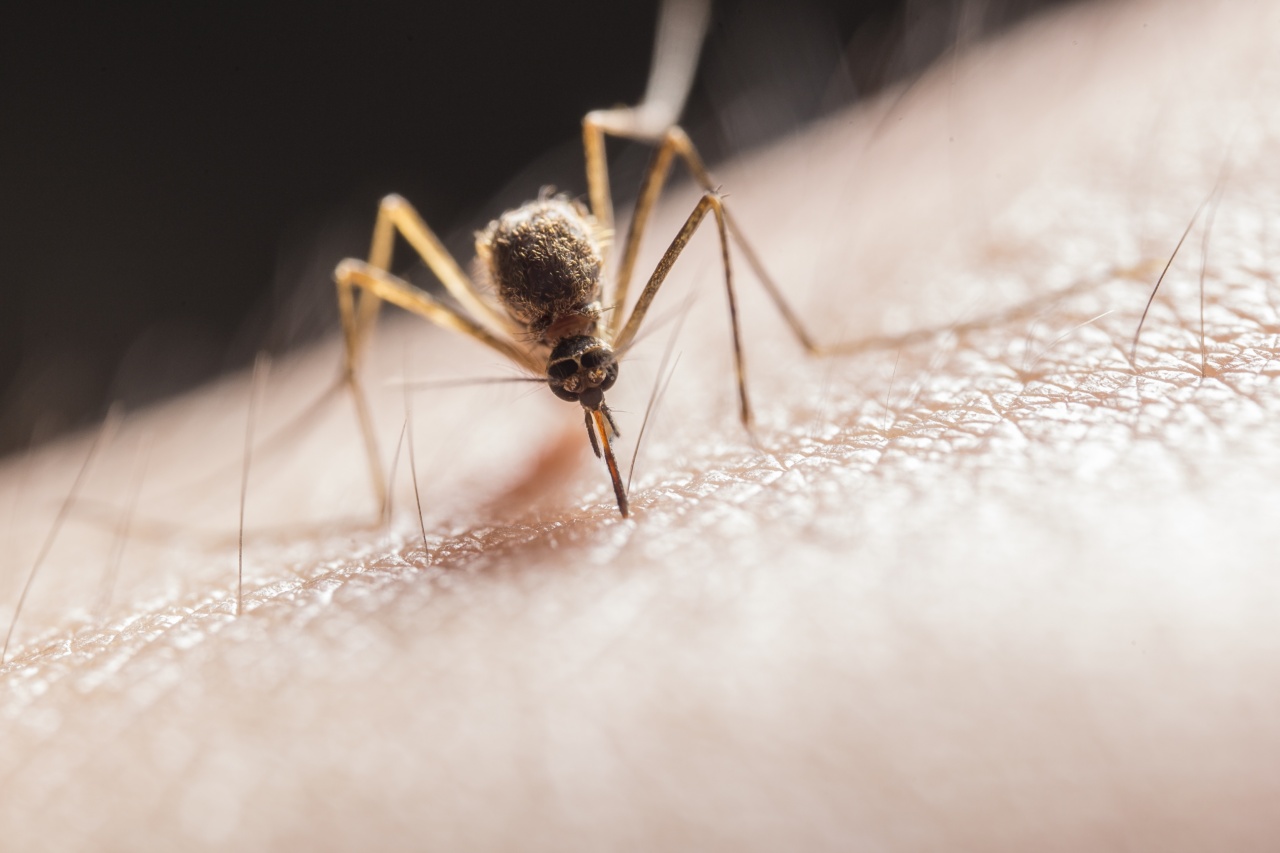Mosquitoes are notorious pests that have the potential to ruin our outdoor experiences. Their itchy bites can be bothersome, and in some cases, they can also transmit diseases such as malaria, dengue fever, Zika virus, and West Nile virus.
While no one is entirely immune to mosquito bites, certain factors can make some individuals more susceptible to getting bitten than others. In this article, we will explore who is most at risk for mosquito bites.
Factors that Attract Mosquitoes
Before delving into the specific groups at risk, let’s first discuss the factors that make mosquitoes more attracted to certain individuals:.
1. Blood Type
Believe it or not, your blood type can influence your attractiveness to mosquitoes. According to scientific research, people with blood type O are more likely to be attractive to mosquitoes compared to those with blood type A or B.
2. Body Heat and Sweat
Mosquitoes are drawn to heat and sweat, as these help them locate their targets. Individuals who naturally produce more heat or sweat, such as those who are physically active or overweight, may be more prone to mosquito bites.
3. Carbon Dioxide
Mosquitoes are highly sensitive to carbon dioxide (CO2) as it helps them identify human presence. Larger individuals and pregnant women tend to produce a larger amount of CO2, which can make them more appealing to mosquitoes.
4. Skin Chemicals
Every person has a unique combination of chemicals on their skin, and some of these chemicals can attract mosquitoes. Lactic acid, ammonia, and uric acid are some of the compounds that make certain individuals more attractive to mosquitoes.
5. Dark Clothing
Mosquitoes are visually attracted to dark colors, as they provide greater contrast against the surroundings. Wearing dark clothing, especially in outdoor areas with high mosquito populations, can increase your risk of getting bitten.
6. Perfumes and Fragrances
Strong scents, such as perfumes, scented lotions, and even fabric softeners, can attract mosquitoes. Avoiding heavily scented products can help reduce your attractiveness to these pesky insects.
7. Time of Day
Mosquitoes are most active during dawn and dusk. Being outdoors during these times significantly increases the chance of getting bitten, regardless of other risk factors.
Groups at Higher Risk
While anyone can be bitten by mosquitoes, certain groups of individuals tend to be more attractive targets for these insects:.
1. Children
Mosquitoes are often more attracted to children compared to adults. This may be due to the fact that children produce more heat, sweat, and certain skin chemicals that attract mosquitoes.
2. Pregnant Women
Pregnant women produce a greater volume of carbon dioxide and body heat, making them more attractive to mosquitoes. Additionally, hormone changes during pregnancy can also affect skin chemicals, potentially increasing their susceptibility to bites.
3. Individuals with Type O Blood
As mentioned earlier, individuals with blood type O are more appealing to mosquitoes. If you have type O blood, take extra precautions to avoid mosquito bites.
4. People Who Exercise Outdoors
Physical activity increases both body heat and sweat production, making individuals who exercise outdoors more likely to be bitten.
Additionally, exercising near areas with standing water, which is a breeding ground for mosquitoes, further increases the risk.
5. Outdoor Workers
Individuals who work outdoors, such as construction workers, landscapers, and farmers, may have a higher risk of mosquito bites due to spending prolonged periods in mosquito-infested areas.
6. Those Living in Mosquito-Prone Areas
Some regions are more prone to mosquito infestations than others. For example, areas near bodies of stagnant water, such as swamps, marshes, or areas with poor drainage, tend to have higher mosquito populations.
Residents in such areas are naturally at greater risk for mosquito bites.
Preventing Mosquito Bites
While certain individuals may be more at risk for mosquito bites, there are several steps that can be taken to reduce the likelihood of getting bitten:.
1. Use Mosquito Repellent
Apply mosquito repellent to exposed skin when spending time outdoors, especially during peak mosquito activity hours. Look for repellents containing ingredients like DEET, picaridin, or oil of lemon-eucalyptus for maximum effectiveness.
2. Wear Protective Clothing
Cover up as much skin as possible by wearing long sleeves, long pants, socks, and closed-toe shoes when in mosquito-prone areas. Choose light-colored clothing, as mosquitoes are less attracted to lighter hues.
3. Eliminate Standing Water
Mosquitoes breed in stagnant water. Regularly empty, clean, or cover any containers that may hold water, such as buckets, bird baths, or flowerpots, to prevent mosquitoes from laying their eggs.
4. Use Mosquito Nets
When camping, sleeping outdoors, or spending time in areas with a high mosquito population, sleep under a mosquito net for added protection.
5. Install Screens and Seal Openings
Keep mosquitoes out of your home by installing screens on doors and windows. Seal any gaps or cracks that mosquitoes can use to enter your living spaces.
6. Avoid Peak Mosquito Hours
Try to limit your time outdoors during dawn and dusk when mosquitoes are most active. If you must go outside during these hours, take extra precautions to prevent mosquito bites.
Conclusion
While no one is completely safe from mosquito bites, certain individuals may be more at risk due to factors such as blood type, body heat, skin chemicals, and clothing choices.
Vulnerable groups include children, pregnant women, individuals with type O blood, outdoor workers, and those living in mosquito-prone areas.
By understanding these factors and taking appropriate preventive measures, such as using repellents, wearing protective clothing, and eliminating standing water, it is possible to reduce the risk of mosquito bites and the potential transmission of mosquito-borne diseases.





























